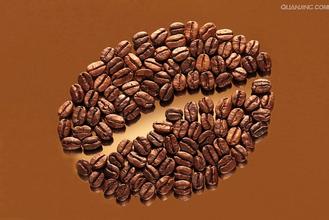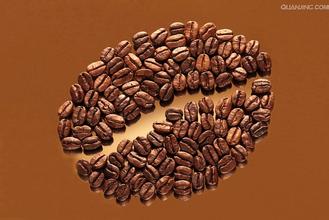Introduction to Bourbon Rivida Coffee Bean Queen Manor Coffee Flavor description treatment method Grinding scale varieties
Introduction of Bourbon Rivida Coffee Bean Queen Manor Coffee Flavor description method Grinding scale Variety
In Brazil, because the planting area of coffee is too large and the degree of mechanized production is relatively high, people often harvest ripe and green fruits together, and there is usually no sorting process. Sometimes coffee fruit is mixed with coffee branches and leaves. Not only that, Brazilian coffee beans are sun-dried, and farmers put coffee beans of different maturity together and expose them in the sun, so that the beans are mixed with soil and various impurities in the first place. sometimes overripe and rotten coffee fruits can also affect the flavor of coffee beans.
Brazilian coffee was introduced from French Guiana in 1729. Coffee was originally grown in the north, but the coffee trees did not grow well until 1774, when a Belgian missionary planted coffee in Rio, a warmer and wetter climate in southern Brazil. So far, Rio is also one of the important producers of Brazilian coffee. Brazil grows many kinds of coffee, most of which are not of high quality, but there are also some world-famous products, Bourbon Santos is one of them. This seemingly complicated name sums up the history of this coffee.
Brazil makes full use of the tropical geographical environment and attaches importance to the production and sale of coffee, so that the output, export volume and per capita consumption of coffee have been ranked first in the world for many years, and have been known as the "kingdom of coffee". But the hometown of coffee is not in Brazil, but in the Ethiopian province of Kafa in Africa.
Coffee was introduced into Brazil after the 18th century. In 1727, coffee was introduced into Port Belem, Brazil from Guyana. Since then, coffee has settled in Brazil, mainly in the southeast coastal areas of Brazil. Namely, Sao Paulo, Parana, San Esprito, Minas Gerais and other four states. From the end of the 18th century to the 1920s, coffee production was at its peak in Brazil, which once accounted for 75% of the world's total coffee production. Over a long period of time, coffee exports accounted for 2. 3% of Brazil's total export revenue, making Brazil a well-deserved "coffee kingdom". The economic crisis that broke out in 1929 sharply reduced the world consumption of coffee, dealing a heavy blow to Brazil's coffee economy.

Important Notice :
前街咖啡 FrontStreet Coffee has moved to new addredd:
FrontStreet Coffee Address: 315,Donghua East Road,GuangZhou
Tel:020 38364473
- Prev

Description of characteristics and flavor of Latin American coffee beans introduction to grinding scale of taste treatment
Characteristic flavor description of Latin American coffee beans taste treatment grinding scale introduction Costa Rica (Costa Rica) aroma 3.5% brightness 4.5% mellow 3% flavor 4.5% aftertaste 4.5% suitable for baking degree: if Light/Medial/City wants to show Costa Rican perfectly balanced flavor, it should not be deep baked, it is recommended that the degree of City is enough, even after the first explosion.
- Next

Introduction to the production area of Grinding scale Manor by the method of Flavor description of Brazilian Coffee Bean Grade
Brazilian coffee bean grade classification, flavor description method, grinding scale manor production area introduces other kinds of Brazilian coffee, such as Rio, Parana, etc., which do not need too much care and can be produced in large quantities, although the taste is relatively rough. however, it is a kind of high-quality and inexpensive coffee, which has its own standard because it is distributed all over Brazil and its solid quality varies.
Related
- Detailed explanation of Jadeite planting Land in Panamanian Jadeite Manor introduction to the grading system of Jadeite competitive bidding, Red bid, Green bid and Rose Summer
- Story of Coffee planting in Brenka region of Costa Rica Stonehenge Manor anaerobic heavy honey treatment of flavor mouth
- What's on the barrel of Blue Mountain Coffee beans?
- Can American coffee also pull flowers? How to use hot American style to pull out a good-looking pattern?
- Can you make a cold extract with coffee beans? What is the right proportion for cold-extracted coffee formula?
- Indonesian PWN Gold Mandrine Coffee Origin Features Flavor How to Chong? Mandolin coffee is American.
- A brief introduction to the flavor characteristics of Brazilian yellow bourbon coffee beans
- What is the effect of different water quality on the flavor of cold-extracted coffee? What kind of water is best for brewing coffee?
- Why do you think of Rose Summer whenever you mention Panamanian coffee?
- Introduction to the characteristics of authentic blue mountain coffee bean producing areas? What is the CIB Coffee Authority in Jamaica?

